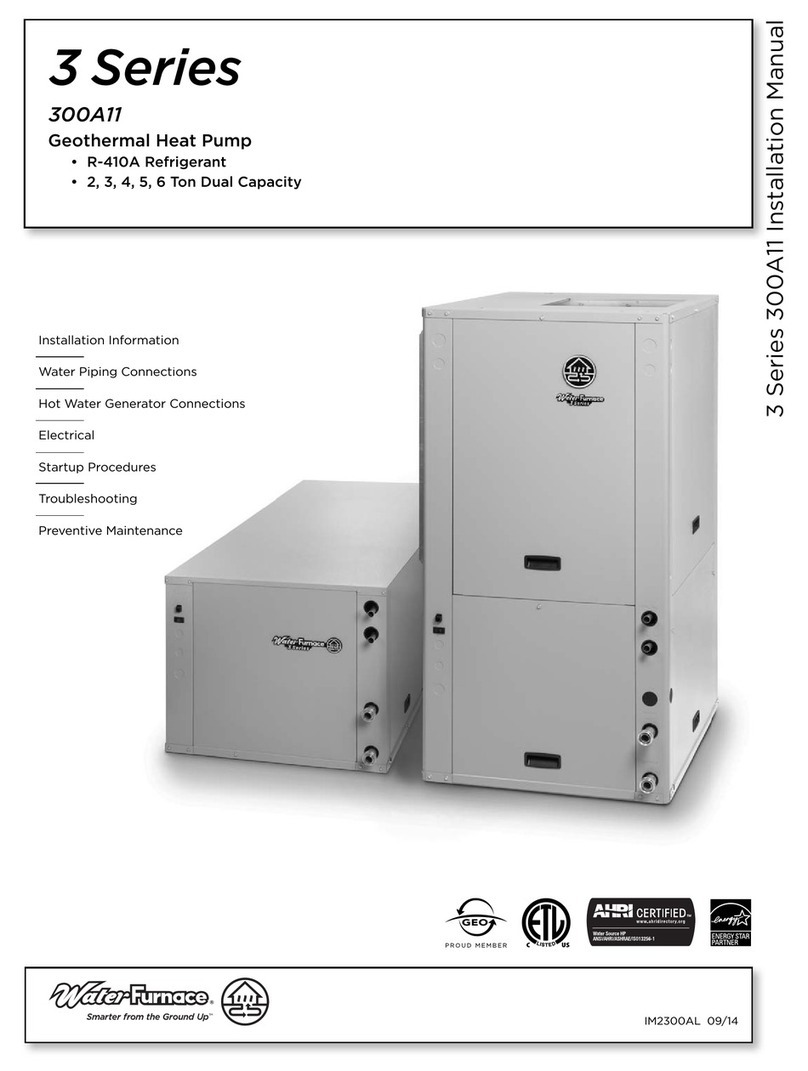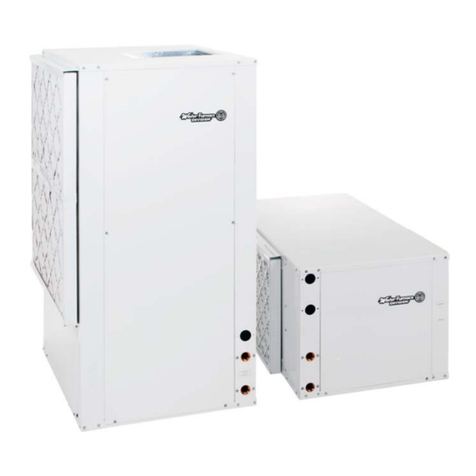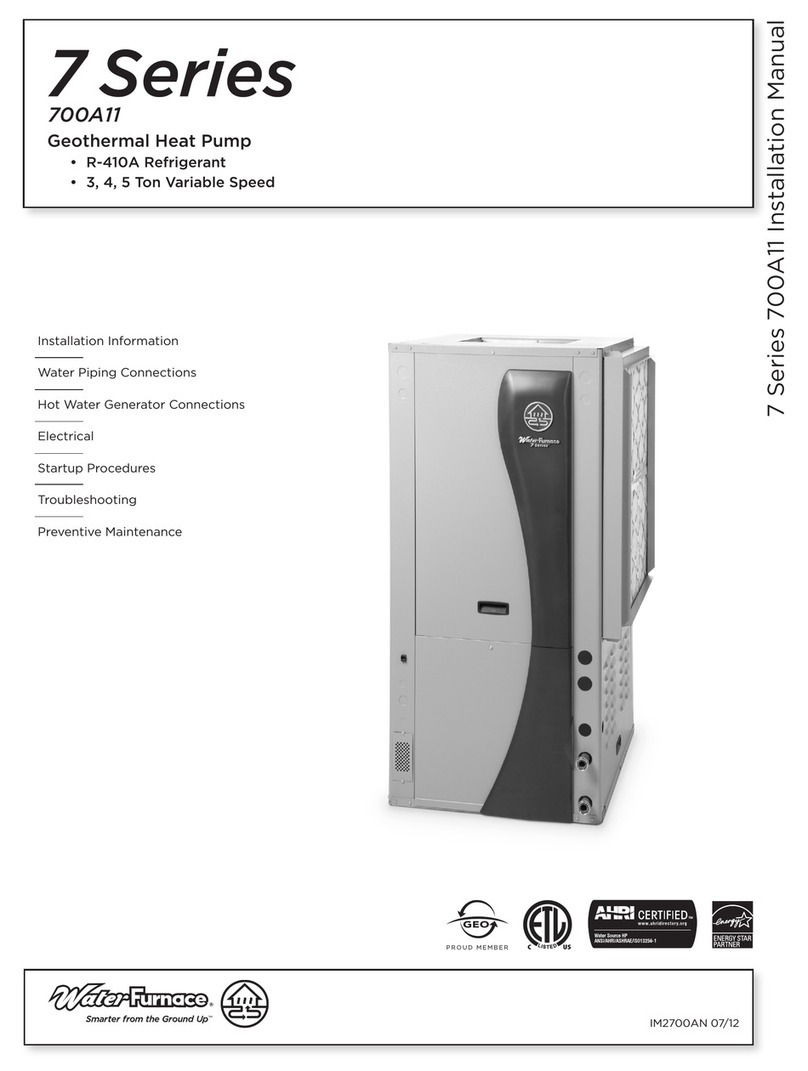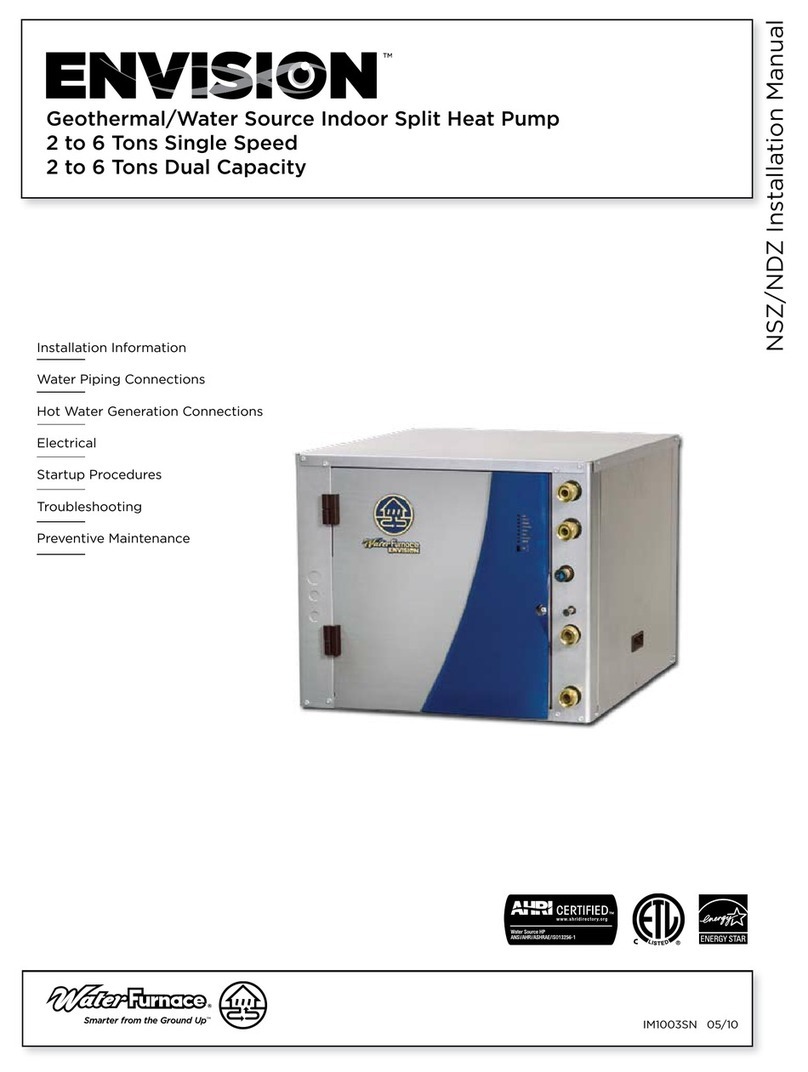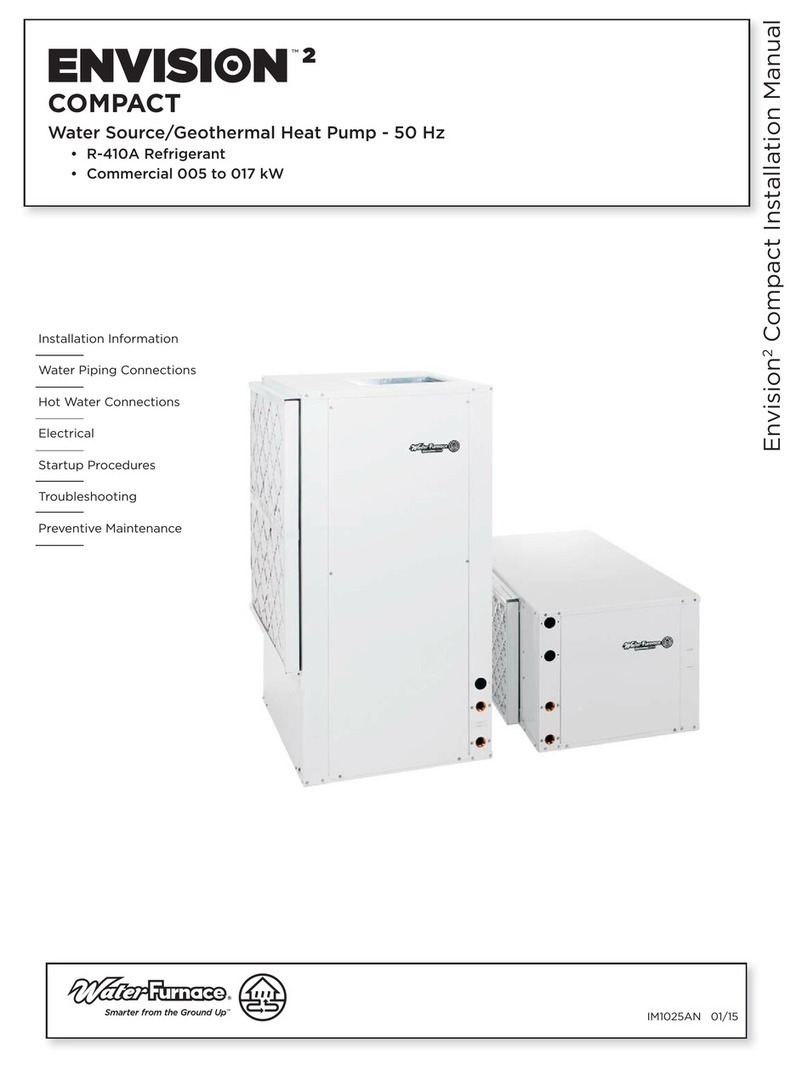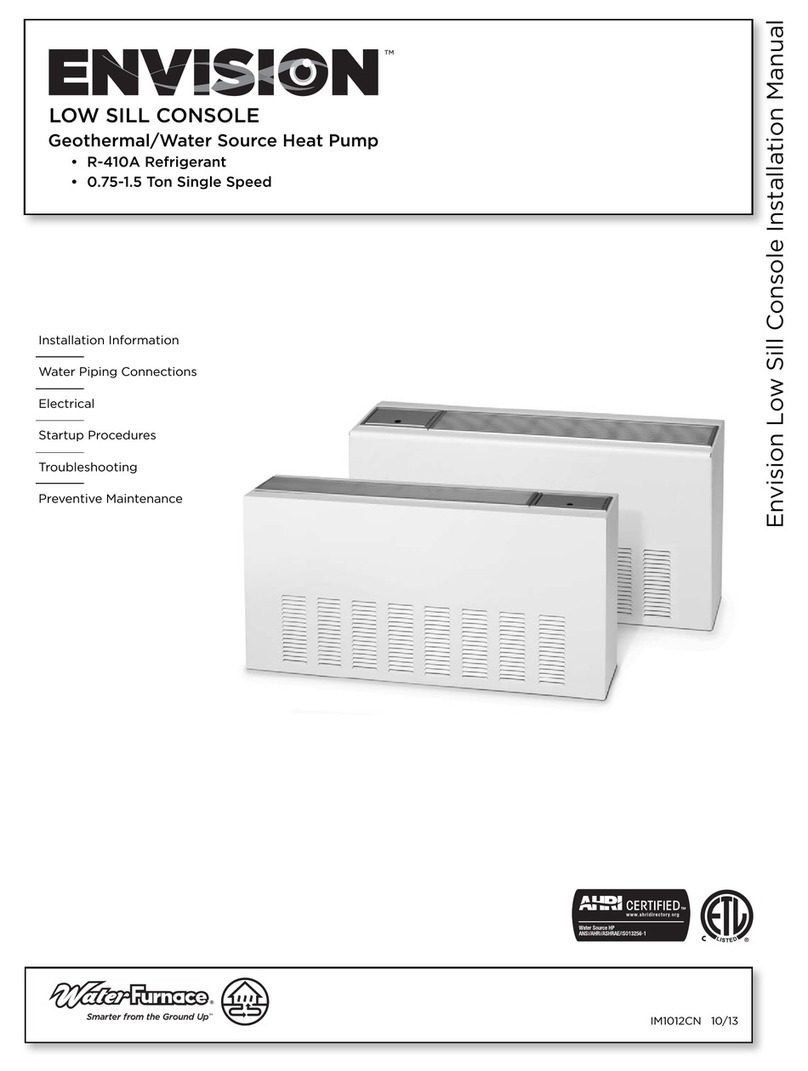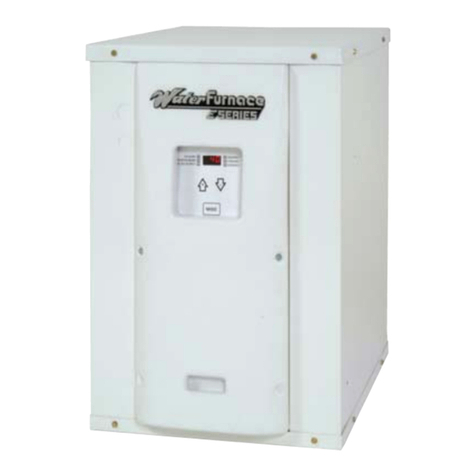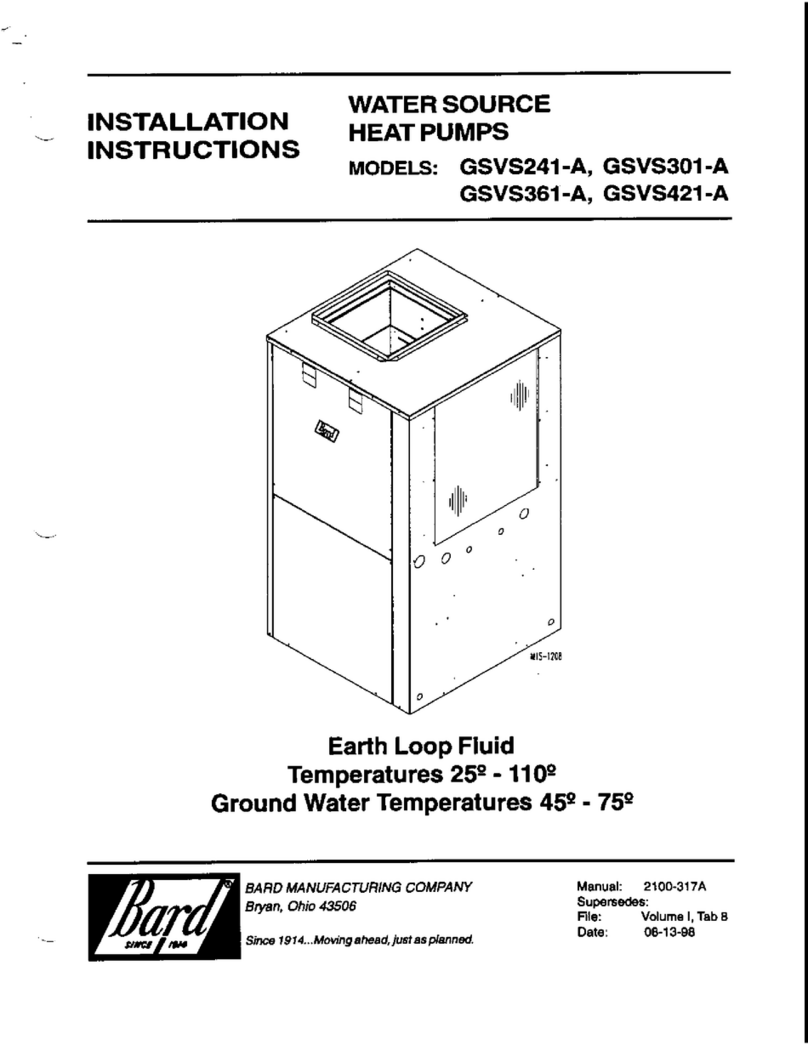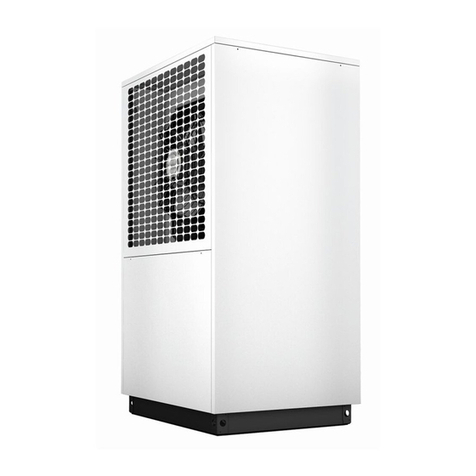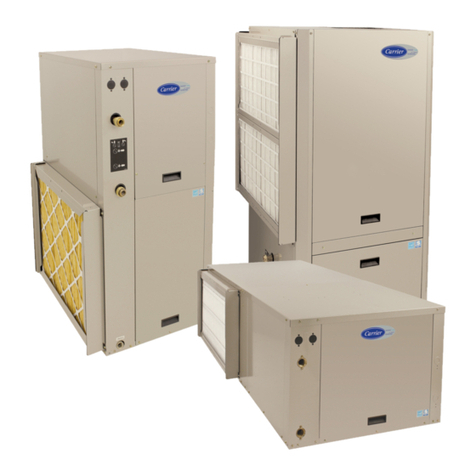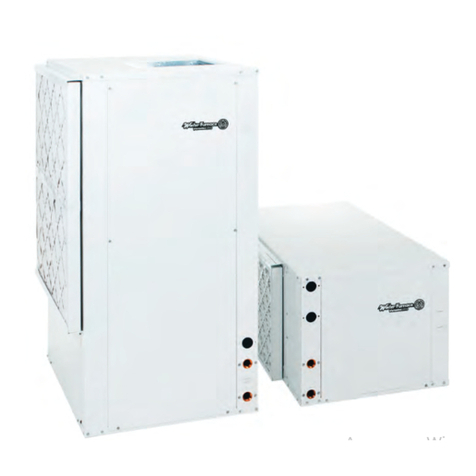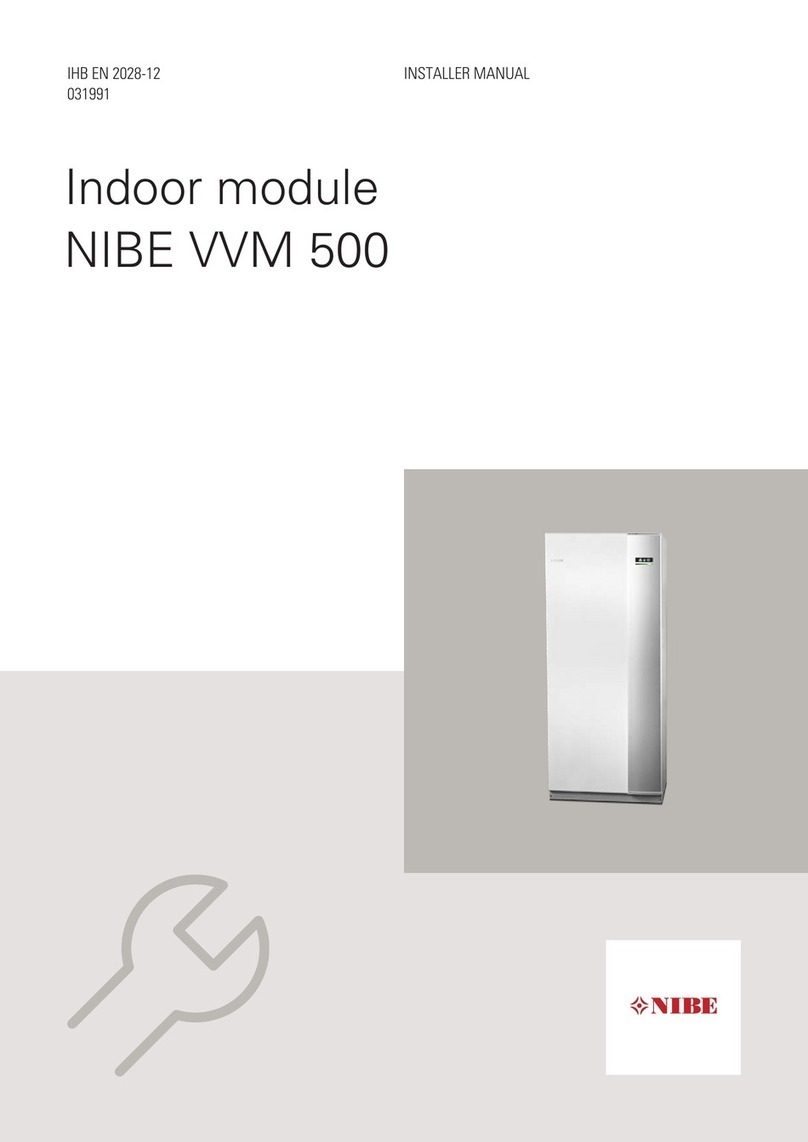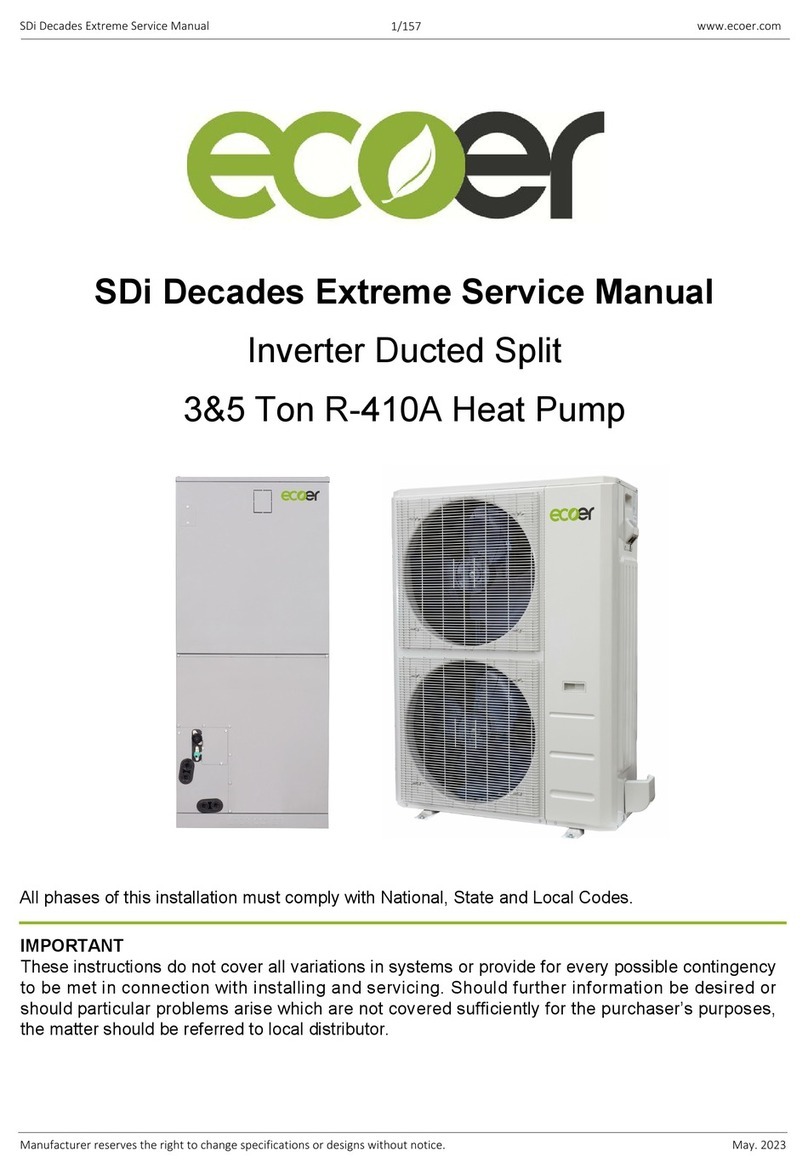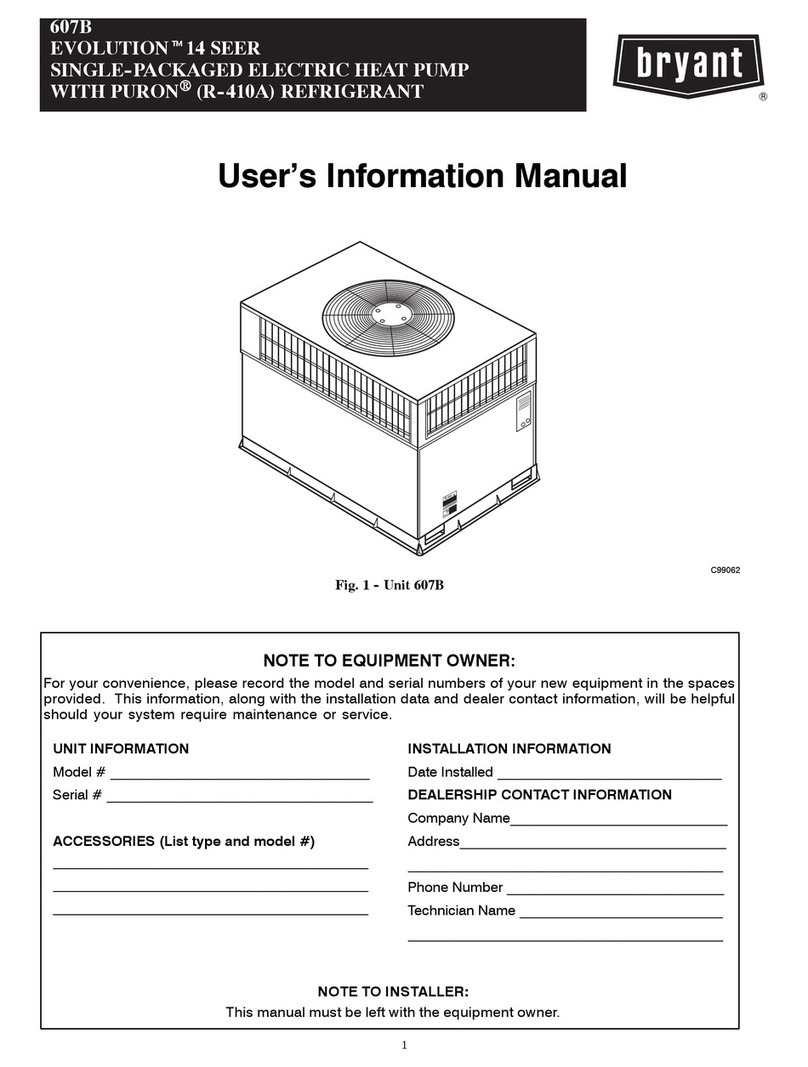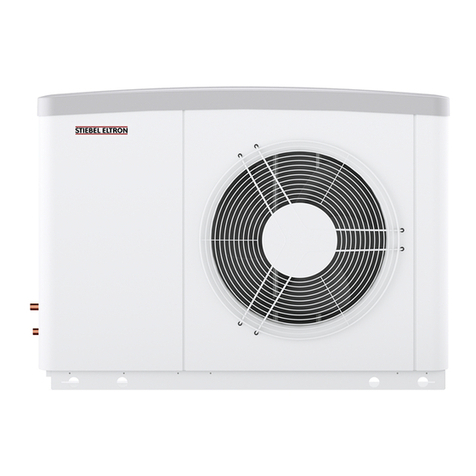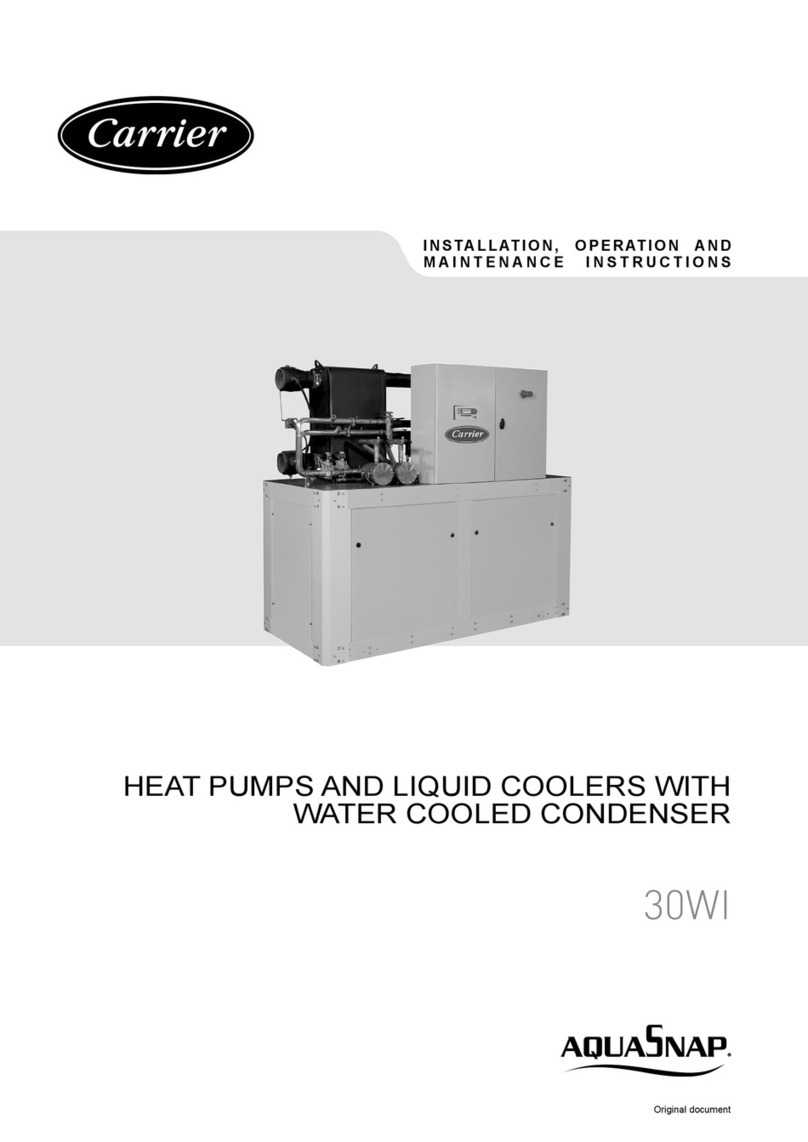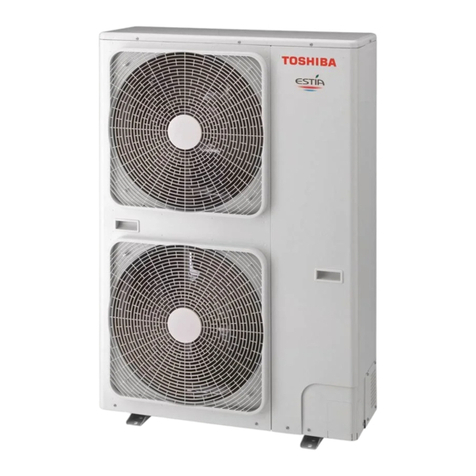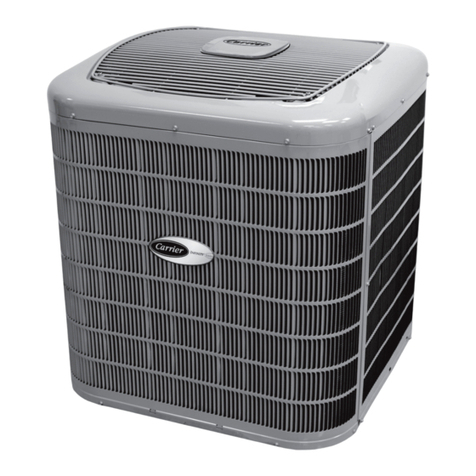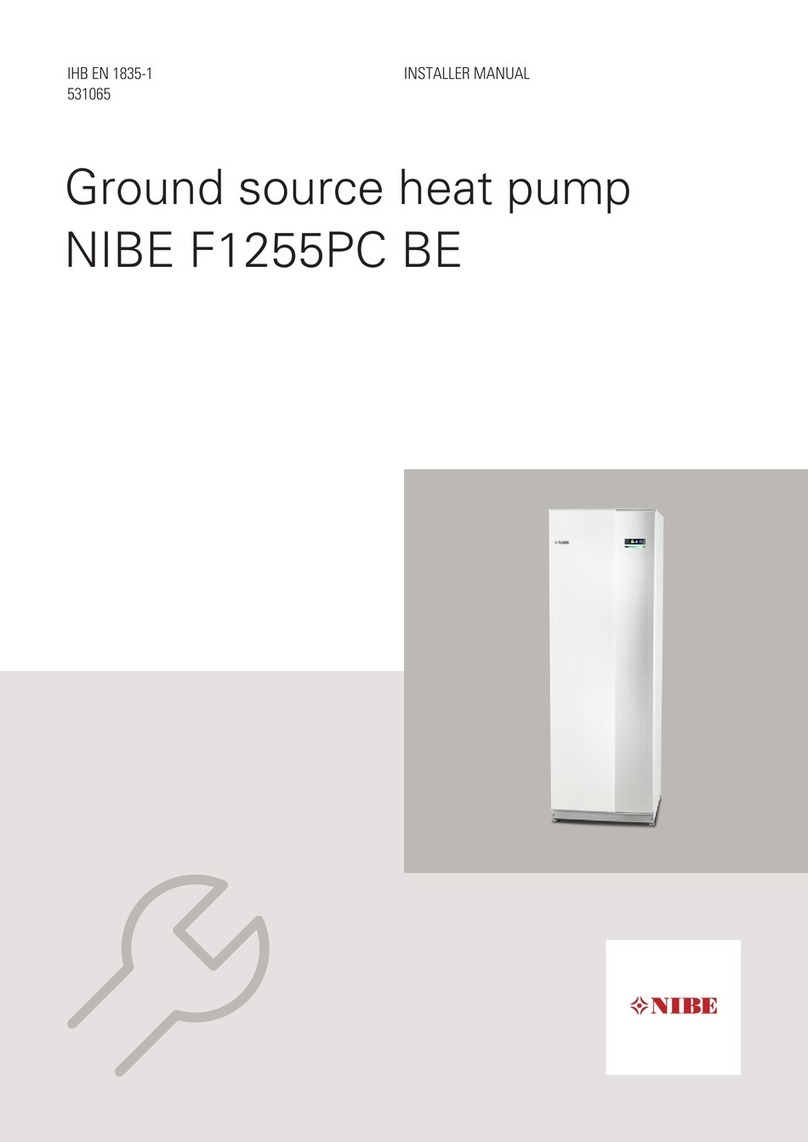
19
7 SERIES 700R11 INSTALLATION MANUAL
Safety Considerations
Warning: Before performing service or maintenance
operations on a system, turn off main power switches to
the equipment. Electrical shock could cause personal
injury.
Installing and servicing heating and air conditioning
equipment can be hazardous due to system pressure and
electrical components. Only trained and qualified service
personnel should install, repair or service heating and air
conditioning equipment. Untrained personnel can perform
the basic maintenance functions of cleaning coils and
cleaning and replacing filters. All other operations should
be performed by trained service personnel. When work-
ing on heating and air conditioning equipment, observe
precautions in the literature, tags and labels attached to the
unit and other safety precautions that may apply. Follow
all safety codes. Wear safety glasses and work gloves. Use
a quenching cloth for brazing operations and have a fire
extinguisher available.
Note: Local codes and regulations take precedent over
any recommendations by the manufacturer. In addition to
conforming to manufacturer’s and local municipal building
codes, the equipment should also be installed in accor-
dance with the National Electric Code and National Fire
Protection Agency recommendations.
Moving and Storage
If the equipment is not needed for immediate installation it
should be left in its shipping carton and stored in a clean,
dry area. Units must only be stored or moved in the normal
“up” orientation.
Unit Location
Locate the unit in an indoor area that allows for easy
removal of the filter and access panels (the air handler
units are not approved for outdoor installation). Location
should have enough space for service personnel to perform
maintenance or repair. Provide sufficient room to make
refrigerant, electrical and duct connections. If the unit is
located in a confined space, such as a closet, provisions
must be made for return air to freely enter the space by
means of a louvered door, etc. The air handler section may
be installed on any level surface strong enough to sup-
port its weight. When installed in a closet or on a stand, it
should be mounted on vibration absorbing material slightly
larger than the base to minimize vibration transmission to
the building structure.
When installed in an attic or above a drop ceiling, the
installation must conform to all local codes. If the unit is
suspended and installed in the horizontal position, the en-
tire length of the unit should be supported. If the applica-
tion requires the air handler to be installed above a finished
space then the unit should be set in a full size secondary
drain pan. In this case the secondary drain pan should be
set on top of a vibration absorbing mesh. The secondary
drain pan is usually placed on a plywood base.
A secondary drain pan should be used when equipment is
installed over a finished living area to provide protection
from water damage in case of plugging of the air handler
primary drain line. The secondary drain line should termi-
nate somewhere that is easily visible by the homeowner. Be
certain to show the homeowner the termination location of
the secondary drain line and to explain its purpose.
Duct System
Many of the problems encountered with heating and
cooling systems can be linked to improperly designed or
installed duct systems. It is therefore highly important for
a successfully operating system that the duct system be
designed and installed properly.
The duct system should be sized to handle the design air-
flow quietly and efficiently. To maximize sound attenuation
of the unit blower, the supply and return plenums should
include an internal duct liner of fiberglass or constructed
of ductboard for the first few feet. On systems employing
a metal duct system, canvas connectors should be used
between the unit and the ductwork. If air noise or exces-
sive airflow is a problem, the blower speed can be changed.
When installing a central air return grille in or near the
living space, it is recommended to design the ductwork so
that the grille is not in direct line with the return opening in
the air handler. One or two elbows will also assure a quieter
installation and system. Application of the unit to un-insu-
lated metal ductwork in an unconditioned space will cause
poor unit performance and allow condensation to form on
the duct and possibly cause damage to the structure.
If the unit is connected to existing ductwork, check the
duct system to ensure that it has the capacity to accom-
modate the air required for the unit application. If the duct
is too small, as in the replacement of heating only systems,
larger ductwork should be installed. All existing ductwork
should be checked for leaks and repaired as necessary.
Air Handler General Installation Information
Air Handler Sizing Selection
Air Handler 7 Series
Indoor Split Model
Rated Airflow
(CFM)
Electric Heat
(kW)
SVH033**2CR1S11 NVZ033 1200 10
SVH042**2CR1S11 NVZ042 1500 10, 15
SVH050**2CR1S11 NVZ050 1800 10, 15, 20
1/29/2020






















